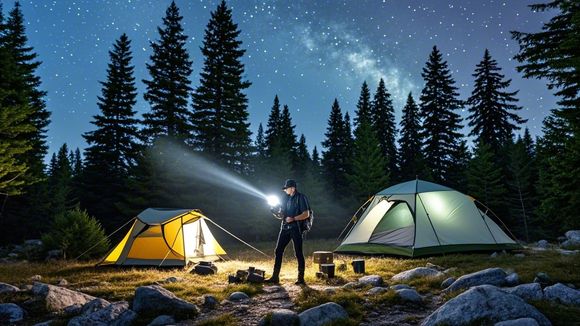Table of Contents
When it comes to illuminating a dark environment, understanding the difference between a flashlight and a floodlight is key. Flashlights offer focused light ideal for specific tasks, while floodlights provide wide-area illumination perfect for large spaces or outdoor activities. But how do you know which one to choose?
In this article, we’ll break down the core differences, advantages, and best-use scenarios for both flashlights and floodlights. By the end, you’ll be equipped to make an informed decision for your lighting needs.
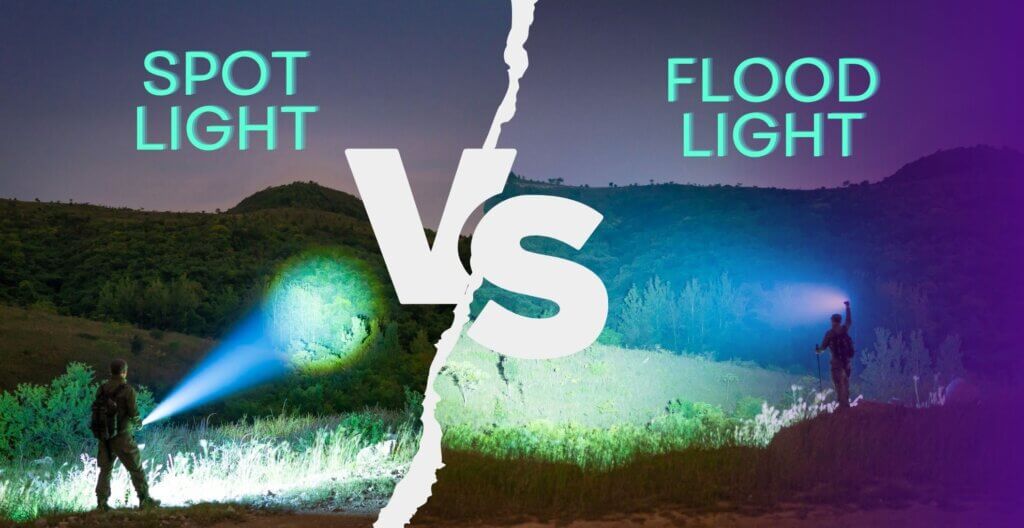
Understanding the Basics: Flashlights and Floodlights Defined
To begin, let’s look at the basic definitions of each. Flashlights are portable devices designed to focus light in a narrow beam, allowing users to illuminate specific areas with precision. They come in a variety of sizes and brightness levels, often measured in lumens, and are perfect for everyday use, emergency situations, and focused tasks like camping or outdoor exploration.
Table of Contents
In contrast, floodlights are larger devices designed to illuminate a wide area. Their beam angle typically exceeds 120 degrees, making them ideal for tasks that require broad visibility such as security lighting, construction sites, and outdoor events.
Now that we have an overview, let’s dive deeper into the key differences that set flashlights and floodlights apart.
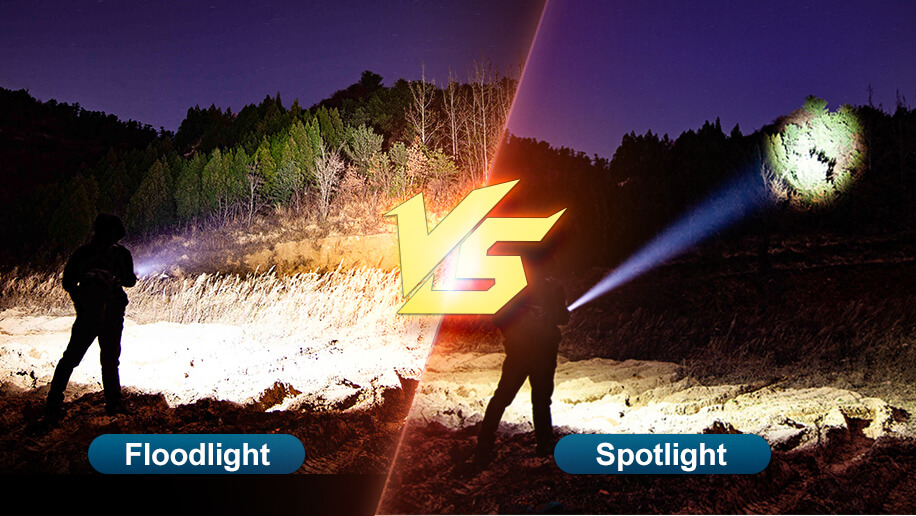
Key Differences Between Flashlights and Floodlights
Beam Angle and Light Distribution
A key factor that differentiates flashlights from floodlights is the beam angle. Flashlights typically have a beam angle of up to 45 degrees, which focuses light on a small area for tasks requiring precision, such as reading or signaling. Floodlights, however, have a beam angle of 120 degrees or more, spreading light over a much larger area, perfect for illuminating outdoor spaces or for general area lighting.
Portability
When it comes to portability, flashlights win hands down. They are compact, lightweight, and easy to carry, often weighing between 100g to 500g. This makes them highly portable, easy to use, and ideal for on-the-go tasks. On the other hand, floodlights are bulkier and heavier, typically weighing between 1kg to 5kg, making them less portable but more effective for large-scale illumination.
Illumination Range
Another difference lies in their illumination range. While flashlights can shine up to 1000 meters in high-end models, floodlights generally provide less range but are ideal for covering a larger area in a shorter distance. Floodlights work well for wide-area lighting, but they can’t match the long-distance visibility that flashlights offer.
These key differences help illustrate how each type of light serves different needs. Now, let’s look at the advantages and disadvantages of each to better understand which one might work best for you.

Advantages and Disadvantages of Flashlights and Floodlights
Flashlight Advantages
Flashlights offer several benefits, starting with their portability. They’re easy to carry and use, making them perfect for everyday activities and emergency situations. They also provide focused light, which is great for illuminating specific objects at a distance. Finally, flashlights are incredibly versatile and can be used in various settings, such as camping, hiking, or tactical operations.
Flashlight Disadvantages
However, flashlights do have their drawbacks. Limited area coverage is one of their main limitations. Since they provide focused light, flashlights can’t illuminate large spaces like floodlights. Additionally, flashlights are not ideal for large-area visibility in environments like construction sites or outdoor events.
Floodlight Advantages
On the other hand, floodlights are perfect for illuminating a wide area, making them ideal for outdoor activities or security lighting. They can also light up larger spaces more effectively than flashlights, which is why they’re widely used in settings like construction sites, parking lots, and outdoor events. Their ability to cover broad spaces makes them invaluable for lighting vast areas at once.
Floodlight Disadvantages
While floodlights excel in broad illumination, they have their own limitations. They are less effective for long-distance visibility, and their focused beam doesn’t provide the same level of precision as a flashlight. Moreover, floodlights tend to be bulky and less portable, making them harder to carry and use in smaller or tighter spaces.
Now that we’ve compared the advantages and disadvantages, let’s move on to the applications for each type of light.
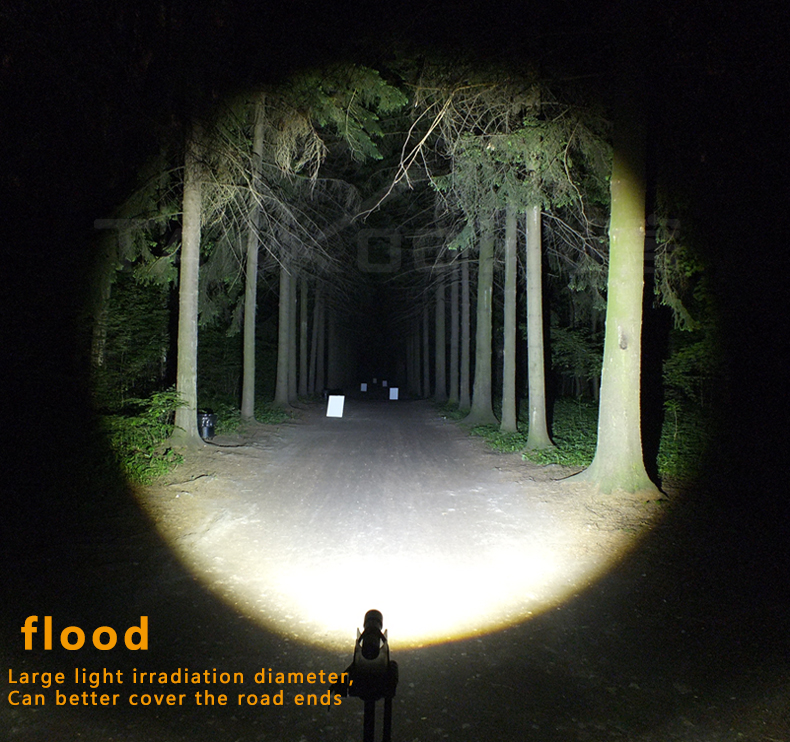
Applications: When to Use a Flashlight vs a Floodlight
When to Choose a Flashlight
Flashlights are perfect when you need focused, portable lighting. Whether you’re navigating a dark path while camping, signaling for help during an emergency, or looking for something specific in the dark, a flashlight provides the precision you need. Flashlights are also handy in more personal, close-range settings where portability is a priority.
- Common Uses: Camping, emergency situations, tactical operations, outdoor activities, personal safety, and more.
When to Choose a Floodlight
Floodlights are ideal when you need to illuminate a large area. Whether you’re hosting an outdoor event, securing a large property, or working on a construction site, floodlights provide the broad visibility needed to keep things well-lit. They are especially useful for situations where many people need to see large areas clearly.
- Common Uses: Security lighting, construction sites, outdoor events, search-and-rescue operations, parking lots, and more.
As we can see, both flashlights and floodlights are used in different scenarios, but the best choice depends on your specific needs. To help you make an informed decision, let’s take a look at some market trends and statistics in the flashlight industry.
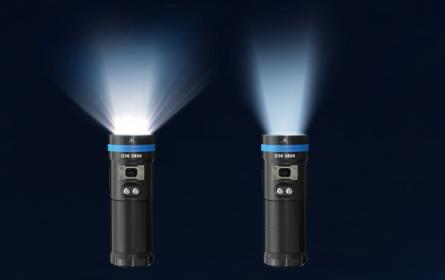
Market Trends and Statistics in the Flashlight Industry
The global flashlight market is experiencing steady growth. According to recent research, the global flashlight market is expected to grow from approximately USD 1.83 billion in 2024 to USD 3.53 billion by 2034, with a CAGR of 6.8%. The U.S. flashlight market alone is projected to reach USD 737.52 million by 2031, growing at a CAGR of 4.5% from 2024 to 2031.
As the demand for high-performance lighting solutions increases, consumers are focusing on features such as brightness (lumens), battery life, durability, and portability. Below is a helpful table summarizing key features of flashlights and floodlights, comparing them side by side.
| Feature | Flashlights | Floodlights |
|---|---|---|
| Typical Lumen Output | 100 – 2000+ lumens | 1000 – 30,000+ lumens |
| Beam Angle | Up to 45° | 120° and above |
| Range | Up to 1000 meters | Up to 500 meters |
| Battery Life | 1.5 – 50 hours | 4 – 20 hours |
| Price Range | $10 – $500+ | $50 – $5000+ |
| Weight | 100g – 500g | 1kg – 5kg |
| Common Uses | Everyday, camping, tactical | Security, events, construction |
These figures help demonstrate the demand for both types of lighting and highlight the key factors that are driving the flashlight market. With that in mind, let’s discuss what consumers typically look for when purchasing a flashlight or floodlight.

Consumer Preferences: What Do Users Look for?
When selecting a flashlight or floodlight, consumers prioritize several key factors:
- Brightness: How many lumens the light produces. This is crucial for both flashlights and floodlights.
- Battery Life: The longevity of the light source on a single charge or set of batteries.
- Durability: Flashlights and floodlights need to withstand rough conditions, especially when used outdoors.
- Portability: While flashlights are generally lightweight and portable, floodlights tend to be bulkier and less convenient to carry.
Understanding these consumer preferences can help you make a more informed decision about which type of lighting device best suits your needs.
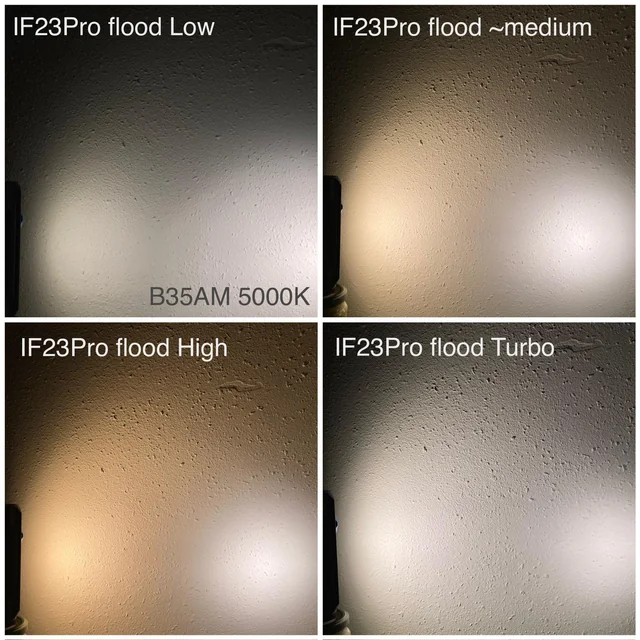
FAQs: Common Questions About Flashlights and Floodlights
What is the difference between a flashlight and a floodlight?
A flashlight provides focused light ideal for specific tasks, while a floodlight offers broad illumination for larger areas.
When should I use a flashlight instead of a floodlight?
Use a flashlight when you need portability, focused light, and long-distance tasks. Choose a floodlight for wide-area illumination in outdoor settings or security applications.
What are the advantages of using a floodlight?
Floodlights provide wide-area illumination, making them ideal for outdoor activities, security lighting, and large-scale events.
How do I choose the right flashlight for my needs?
Consider factors like brightness, battery life, and portability based on your specific use case (e.g., camping, emergency, or tactical needs).
What are the best applications for floodlights?
Floodlights are best suited for outdoor events, security lighting, construction sites, and search-and-rescue operations, where broad visibility is essential.
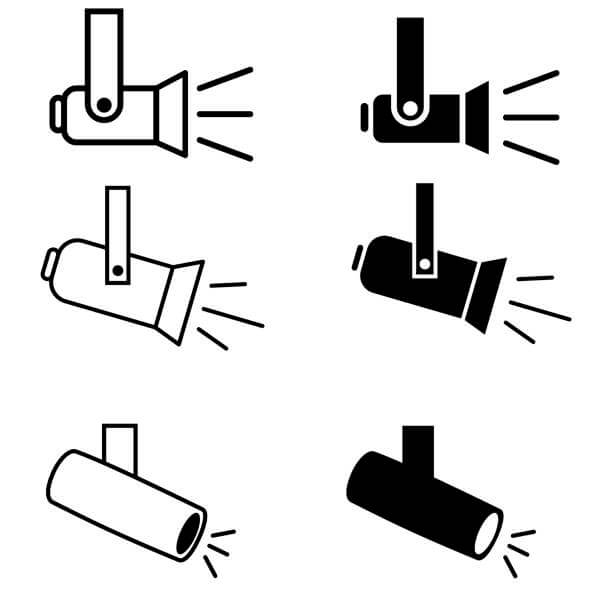
Conclusion: Choosing the Right Lighting Solution
In conclusion, both flashlights and floodlights have their unique advantages and are designed for different tasks. While flashlights offer portability and focused light for specific needs, floodlights excel in wide-area coverage for large outdoor spaces.
Ready to choose the perfect lighting solution? Whether you’re looking for a flashlight for focused tasks or a floodlight for broad illumination, explore our range of high-performance lights at flashlightvendor.com today!
External Link Suggestions


